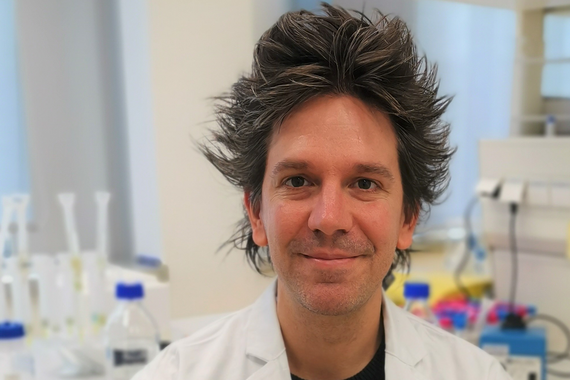- The University
- Studying
-
Research
- Profile
- Infrastructure
- Cooperations
- Services
-
Career
- Med Uni Graz as an Employer
- Educational Opportunities
- Work Environment
- Job openings
-
Diagnostics
- Patients
- Referring physicians
-
Health Topics
- Health Infrastructure

New piece of the puzzle for understanding cancer and cell regulation
For cells to remain healthy and reliably perform their tasks, certain proteins must be transported directly into the nucleus, the control center of the cell. There they regulate key processes such as cell growth, repair mechanisms and responses to stress. If this transport is disrupted, it can have grave consequences: for example, the uncontrolled cell growth of cancer or dysfunctions that occur in age-related diseases such as Alzheimer's. An international research team under the direction of the Medical University of Graz has discovered a previously unknown mechanism that explains how this transport is able to function. The new findings provide important indications for understanding cell regulation and might enable new therapies.
Entry without permission? How proteins enter the nucleus without a "passport"
"The nucleus is like a secure government building: Only with the right ID can you enter," explains study director Tobias Madl of Med Uni Graz. "We knew there were several different molecular access IDs—now our research has indicated the existence of a completely new type. What's especially exciting is that this type may play a large role in cancer biology.”
Proteins normally enter the nucleus with a special "molecular ID"—a certain sequence of amino acids such as serine and arginine. For this ID to be valid, the serine must accept a phosphate group—a process that experts refer to as phosphorylation. Only then does transport protein TNPO3—the security guard, so to speak—recognize that the protein is allowed to enter.
The current study has shown that there is an alternative transport mechanism based on the amino acid tyrosine—which functions entirely without phosphorylation.
Cellular stress, age and cancer—a protein on the wrong path
This newly discovered mechanism is particularly relevant to the protein CIRBP. It plays a key role in cellular stress response, aging processes and possibly the development of cancer. CIRBP uses a tyrosine-based signaling pathway to enter the nucleus without the need for chemical modification such as phosphorylation.
The researchers were able to show that certain tyrosine elements act like molecular "Velcro"—they bind stably to TNPO3, thereby enabling the efficient transport of CIRBP into the nucleus. If CIRBP is phosphorylated, i.e., has accepted phosphate groups, transport is blocked— instead of helping it along, phosphorylation prevents it from entering the nucleus. This might explain why CIRBP can no longer correctly perform its function in certain situations.
Unknown pathways: cellular logistics with a surprise effect
Disrupted regulation of protein transport into the nucleus can have severe consequences. If proteins no longer reach their target at the right time or correctly, cell growth may become uncontrolled or the stress response disrupted. It was already known that several pathways exist for nuclear transport—the new study considerably expanded this knowledge.
"Our findings show how cell regulation is actually complex and flexible," says Qishun Zhou, the first author of the study. "It was not previously known that a transport pathway can function without any phosphorylation."
"This is basic research—but with great potential for the future," adds Tobias Madl. "The better we understand the inner workings of the cell, the more directly we can intervene if equilibrium is lost—whether due to cancer, age-related diseases or other cellular disturbances."
Background of the study
The research was conducted as part of the MetAGE Cluster of Excellence and the Integrative Metabolism Research Center in cooperation with the University of Graz and Johannes Gutenberg University Mainz. High-resolution structural biology methods such as NMR spectroscopy, X-ray crystallography and cell-based analysis were used. The findings were published in the journal Nature Communications, one of the world's leading biomedical research journals.
Further information and contact
Tobias Madl
Otto Loewi Research Center
Division of Medicinal Chemistry
T: +43 316 385 71972


